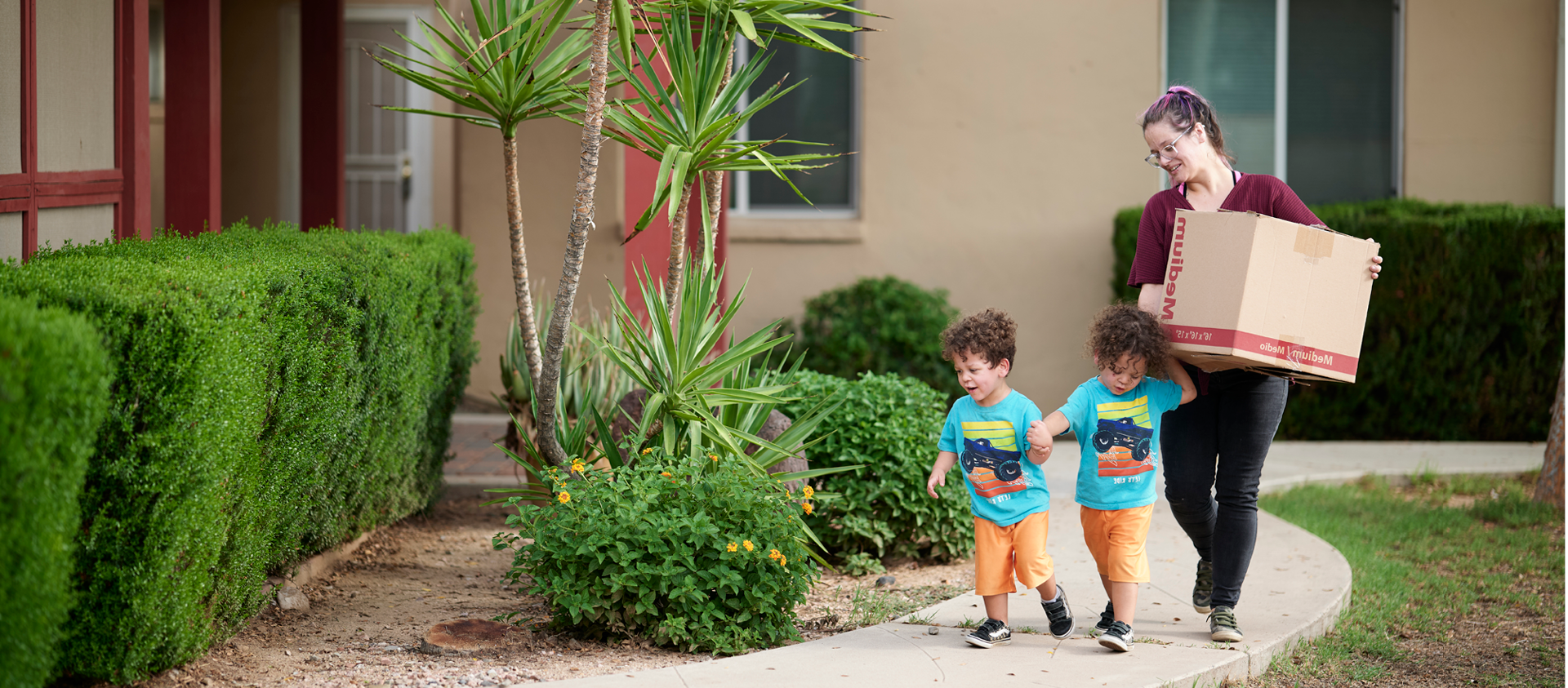The latest Point-in-Time Homeless Count conducted by the Maricopa Association of Governments shows that approximately 7,400 people are experiencing homelessness in Maricopa County. Only half have access to shelter, where they are safe for the night. Plus, due to the end of the eviction moratorium, there are countless individuals and families on the precipice of losing their homes due to the health and economic impacts of COVID-19.
For each person experiencing homelessness, their path to this point is unique. That’s why there is no single solution or organization that can solve homelessness alone.
Throughout 2020, Valley of the Sun United Way engaged the community through virtual town halls, group discussions and surveys to learn more about the Valley’s most pressing issues. Housing and Homelessness sits at the top of that list and is one of four strategic priorities in MC2026, a Five-Year Plan for Mighty Change in Maricopa County. These priorities – Health, Housing and Homelessness, Education, Workforce Development – are interrelated. For example:
- It’s difficult to apply for a job without a home; while at the same time, a person needs a good-paying job to afford growing rents in our community.
- A student experiencing homelessness can struggle with the stability, focus and confidence to succeed in school; yet they must earn a post-high school certificate or degree to obtain a good-paying job.
- Health and mental health are often key drivers to homelessness; and, when homeless, it’s nearly impossible to stay healthy.
Issues rarely stand alone. And often, systemic racial inequities prohibit access to opportunities and resources that serve as a root cause of or create barriers to overcoming these issues. For instance, in Maricopa County, 27% of individuals experiencing homelessness are Black, while only 6% of the county’s population is Black.
That’s where Valley of the Sun United Way and our supporters come in. We partner with organizations across the county to ensure more than 100 programs are working in tandem to solve the complex housing and homelessness issues that have long existed and have been exacerbated by the global pandemic.
With the mighty goal of decreasing homelessness by 50% by 2026, we, along with our partners, are keenly focused on these strategies:
Advocacy and Public Policy
- Increase number of affordable housing units
- Increase permanent support for housing units and support services that assist individuals with vouchers living in private market apartments/units
- Increase regional shelter options
- Change regulations for easier access and coordination of supportive services
Prioritized Communities
- Anyone on the verge of experiencing homelessness due to the COVID-19 recession
- Anyone currently experiencing homelessness in downtown Phoenix
Diversity, Equity, Access and Inclusion
- Remove racial barriers to housing access
Your support makes it possible for Valley of the Sun United Way to bring together a variety of organizations to prevent homelessness, provide emergency shelter to all who need it, and ensure resources are available to guarantee individuals and families remain housed permanently.

